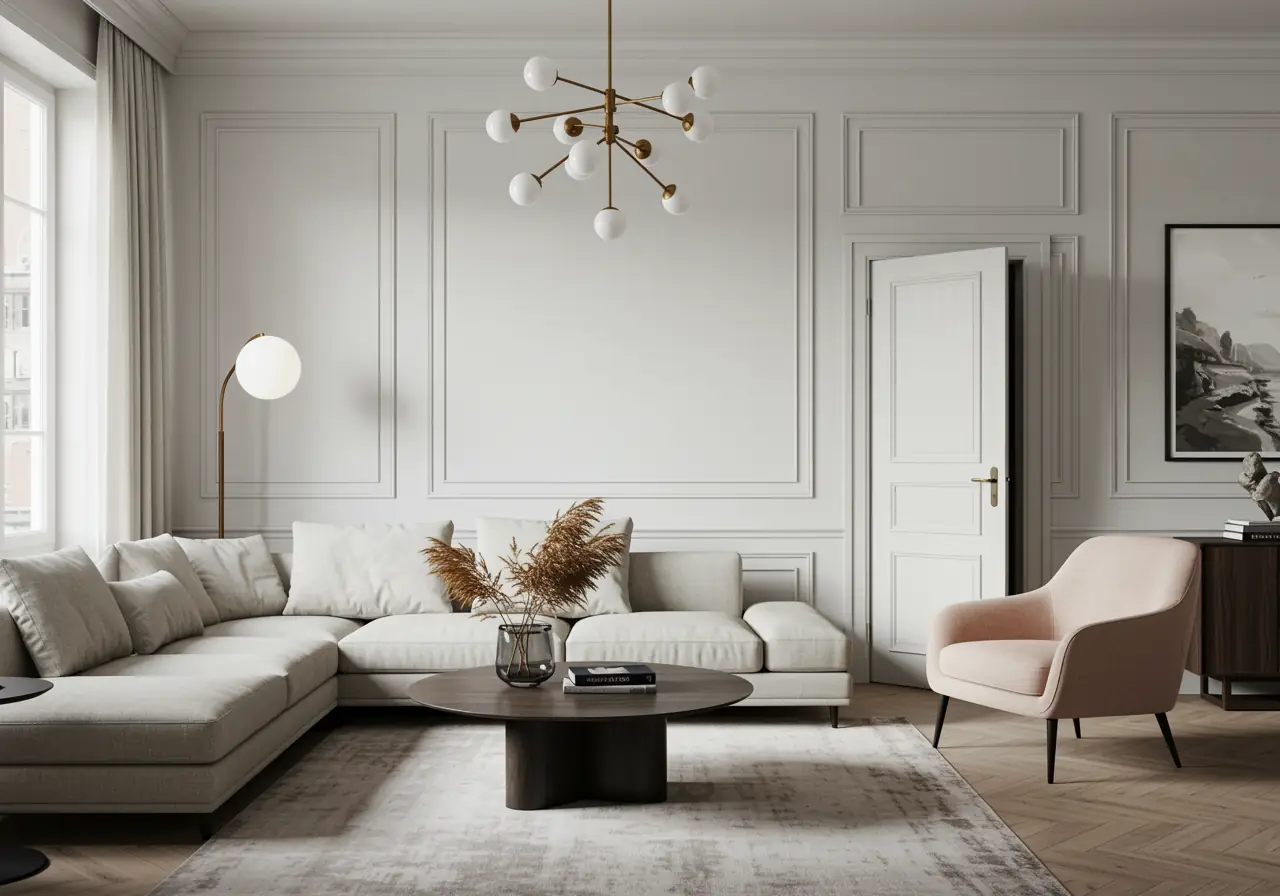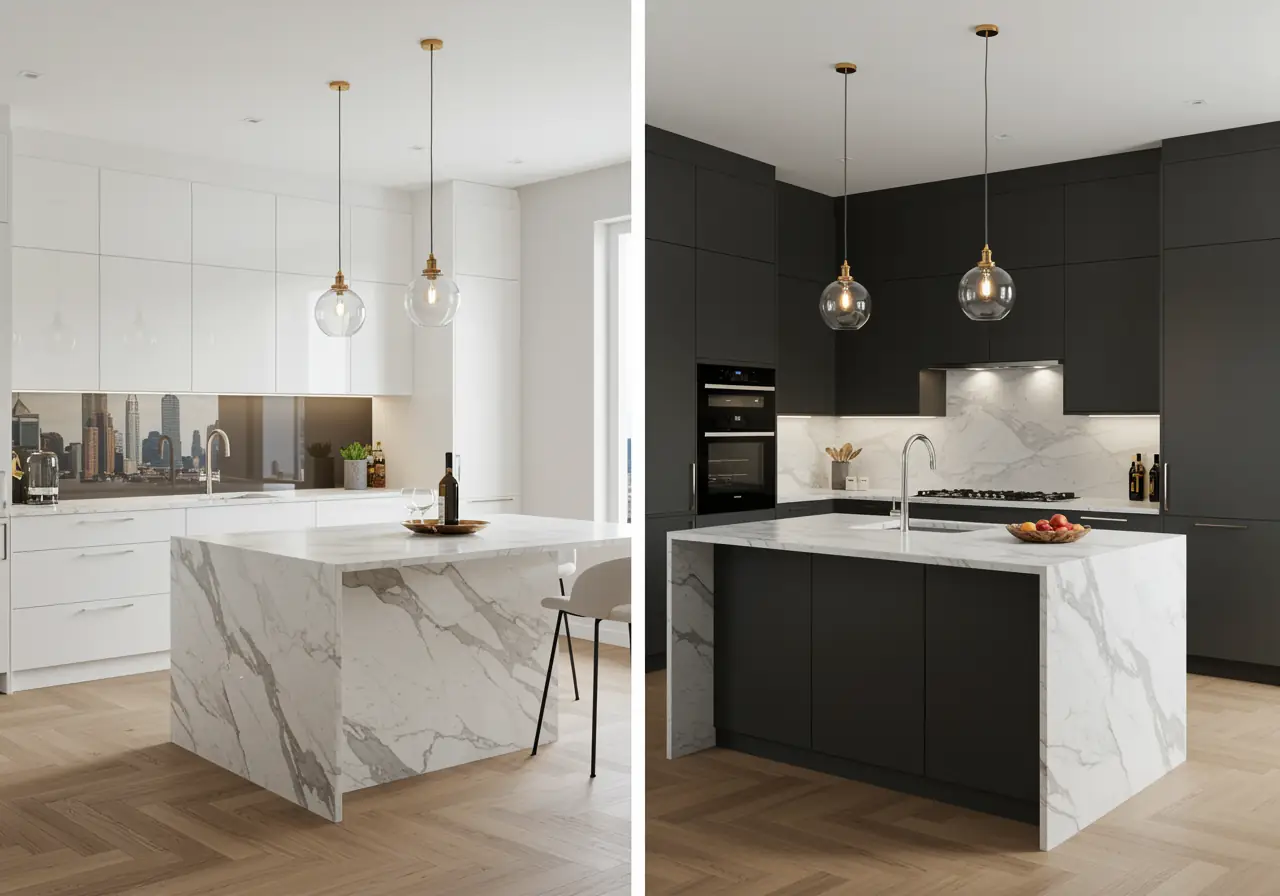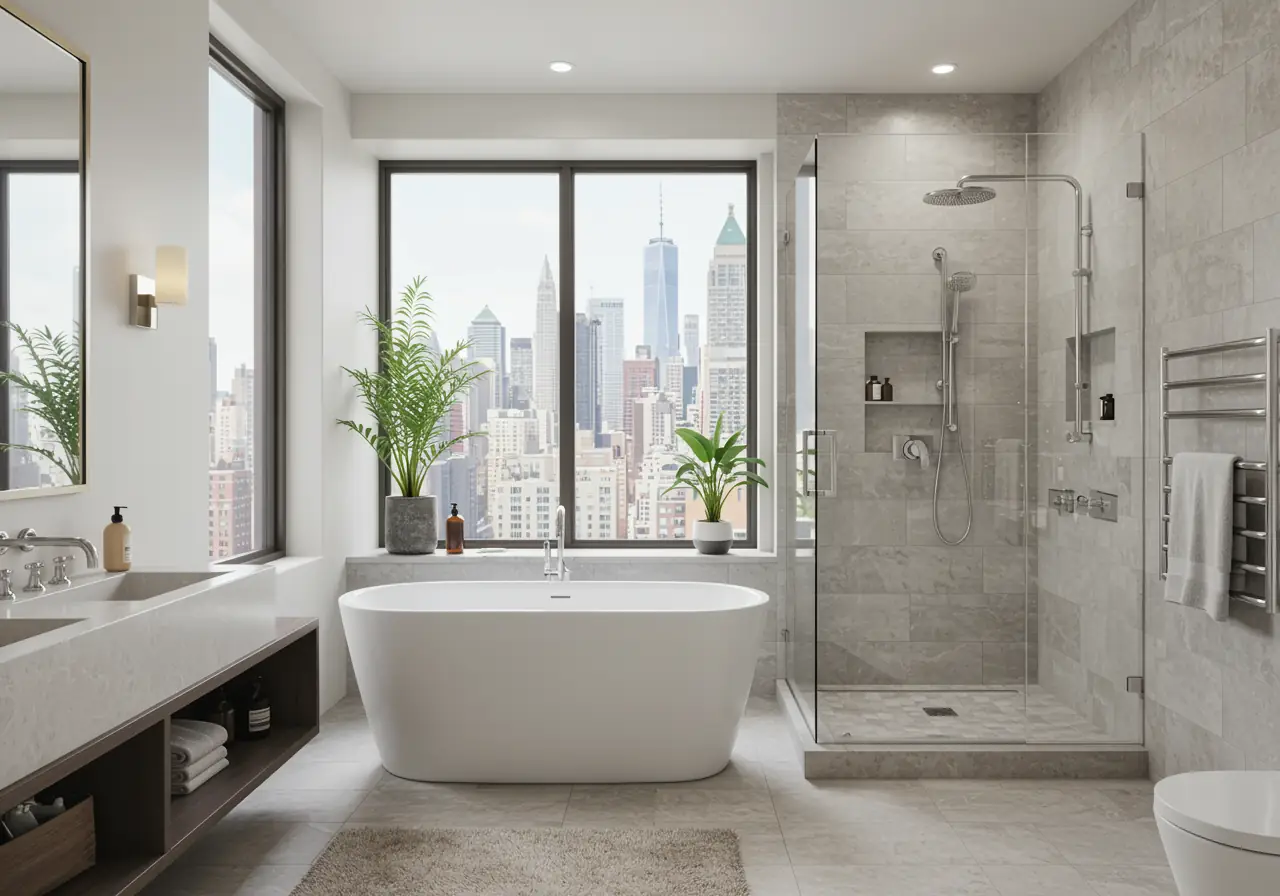Open Kitchen Shelves: Pros, Cons, and Designer Secrets
Open shelving kitchen designs continue to divide opinion, yet they remain a popular feature in modern and transitional kitchens alike. While critics label them “out of style,” many homeowners and designers still embrace the open-shelf look for its visual openness, functionality, and affordability. Compared to traditional kitchen cabinets, open kitchen shelves make spaces feel lighter, more spacious, and easier to access. They’re ideal for small kitchens, minimalist layouts, or anyone seeking a more flexible, display-driven kitchen storage solution. However, concerns about dust buildup, constant organization, and clutter visibility still hold many back.
In this article, we explore the real pros and cons of open shelving vs cabinets, helping you decide whether open shelves are the right choice for your lifestyle. From design tips to cleaning considerations, you’ll learn how to incorporate open shelves in a way that balances aesthetics, practicality, and everyday usability in your next kitchen remodel.

Open Shelving vs Cabinets: What's the Real Difference?
When comparing cabinets to open shelving kitchen designs, several fundamental differences impact how your space functions and feels. Understanding these distinctions helps you make the right choice for your lifestyle and design aesthetic preferences.
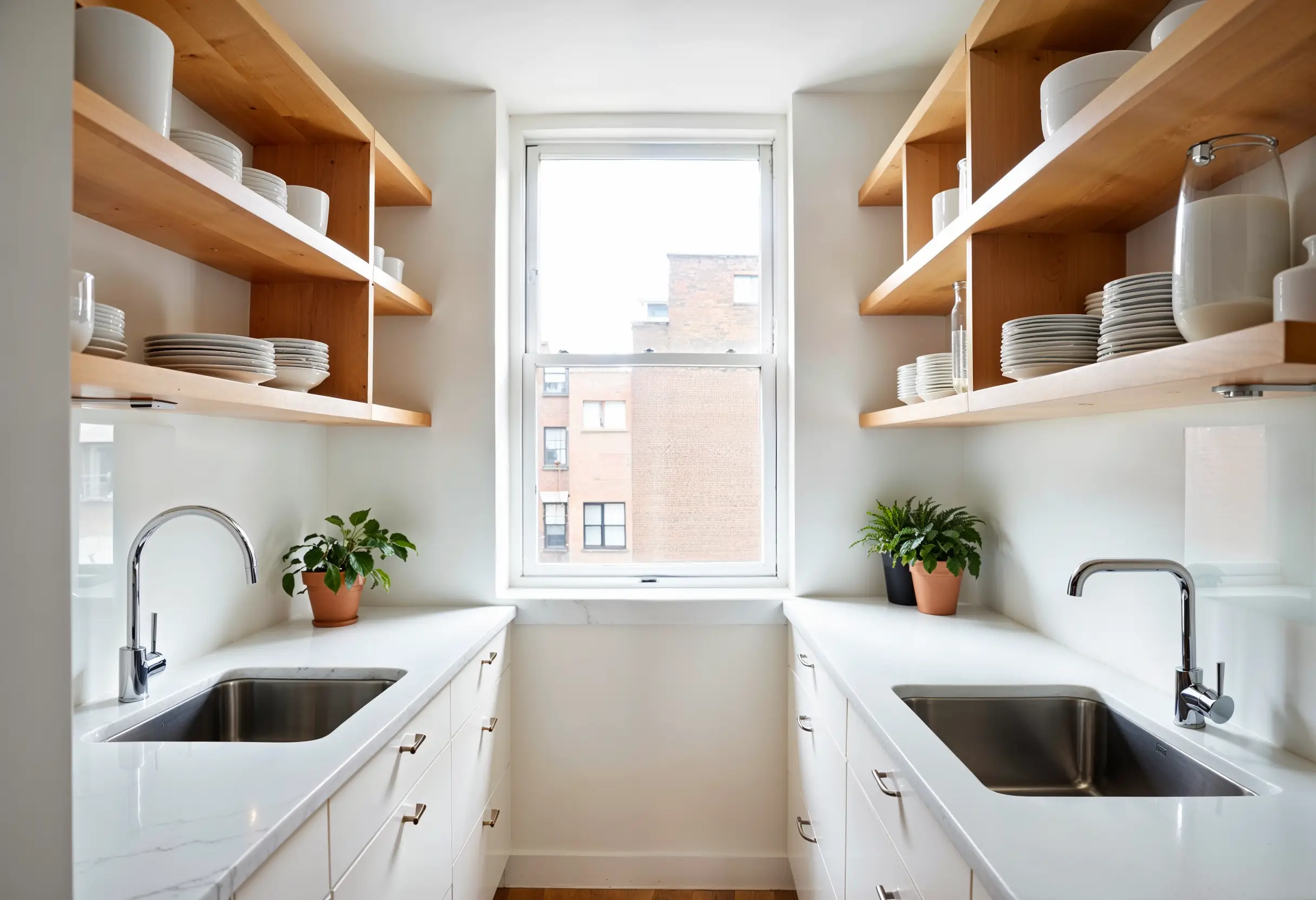
Storage capacity and functionality
Traditional cabinets generally offer more storage space thanks to their enclosed design. The hidden space allows you to stack items freely without worrying about appearance. Conversely, open shelves typically hold fewer items since everything must be thoughtfully arranged and accessible.
Nevertheless, open shelving provides immediate visibility and accessibility. You'll spot what you need at a glance - no more opening multiple cabinet doors searching for that specific spice or serving dish. This instant access makes open shelving kitchen designs particularly useful for frequently used items and can improve your kitchen workflow.
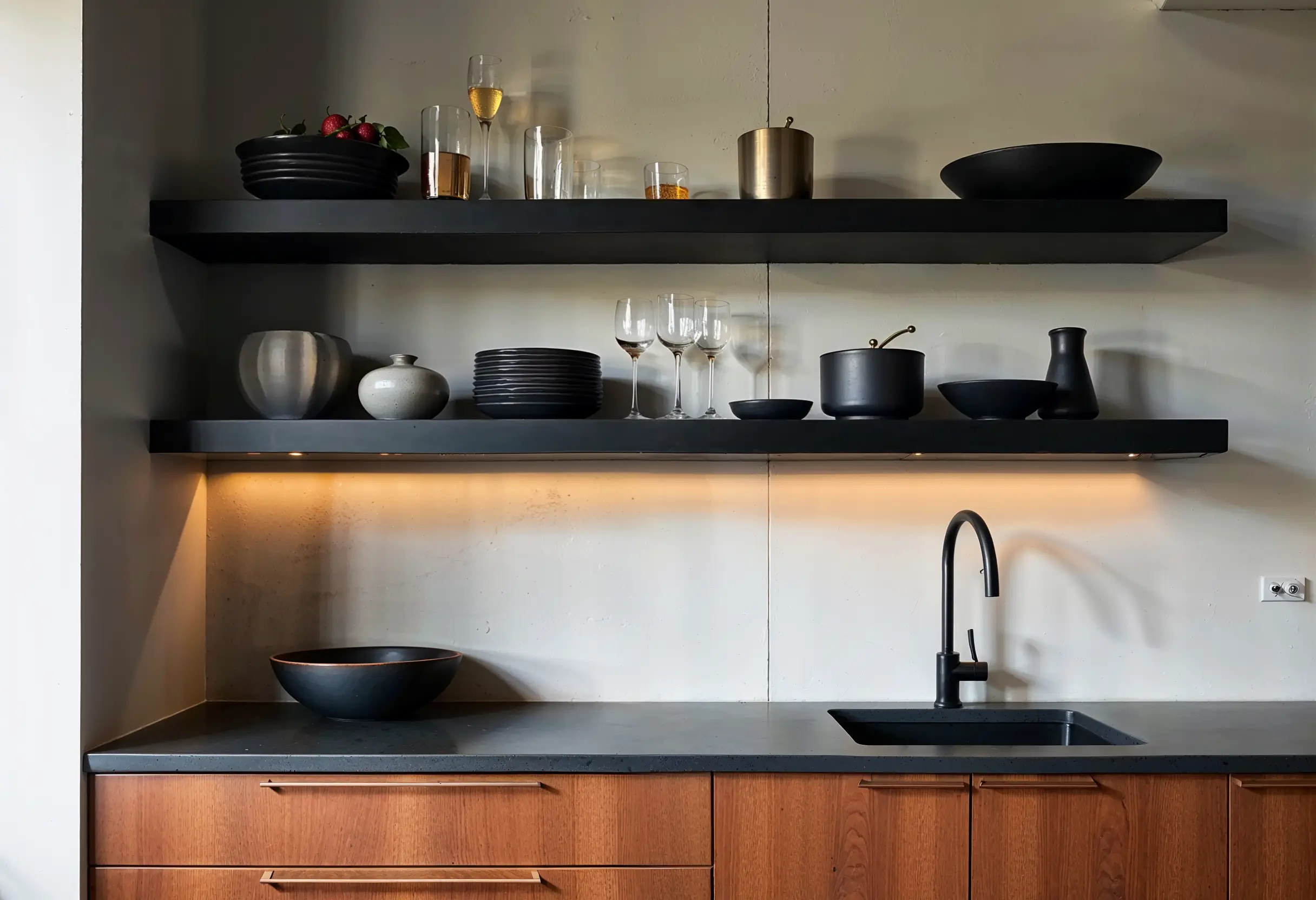
Visual impact and design flexibility
One significant advantage of open shelving cabinets is the visual breathing room it creates. Open shelves make small kitchens appear more spacious by eliminating bulky cabinet doors that can overwhelm narrow spaces. Furthermore, shelves offer unlimited styling opportunities - you can easily refresh your kitchen decor by rearranging displayed items seasonally.
For those who appreciate dynamic design, open shelving allows for more frequent style updates without major renovations. You might display colorful dishware in summer and switch to warmer tones in fall - all without spending a dime on construction.
Maintenance and cleaning needs
Let's be honest about maintenance: open shelving kitchen designs require more frequent attention. Items on display collect dust and cooking residue, necessitating regular cleaning of both the shelves and displayed items to maintain a tidy kitchen.
Cabinets, meanwhile, protect contents from dust and grease, meaning you'll clean displayed items less frequently. However, cabinet interiors still need occasional deep cleaning, though less visibly and urgently than open shelving.
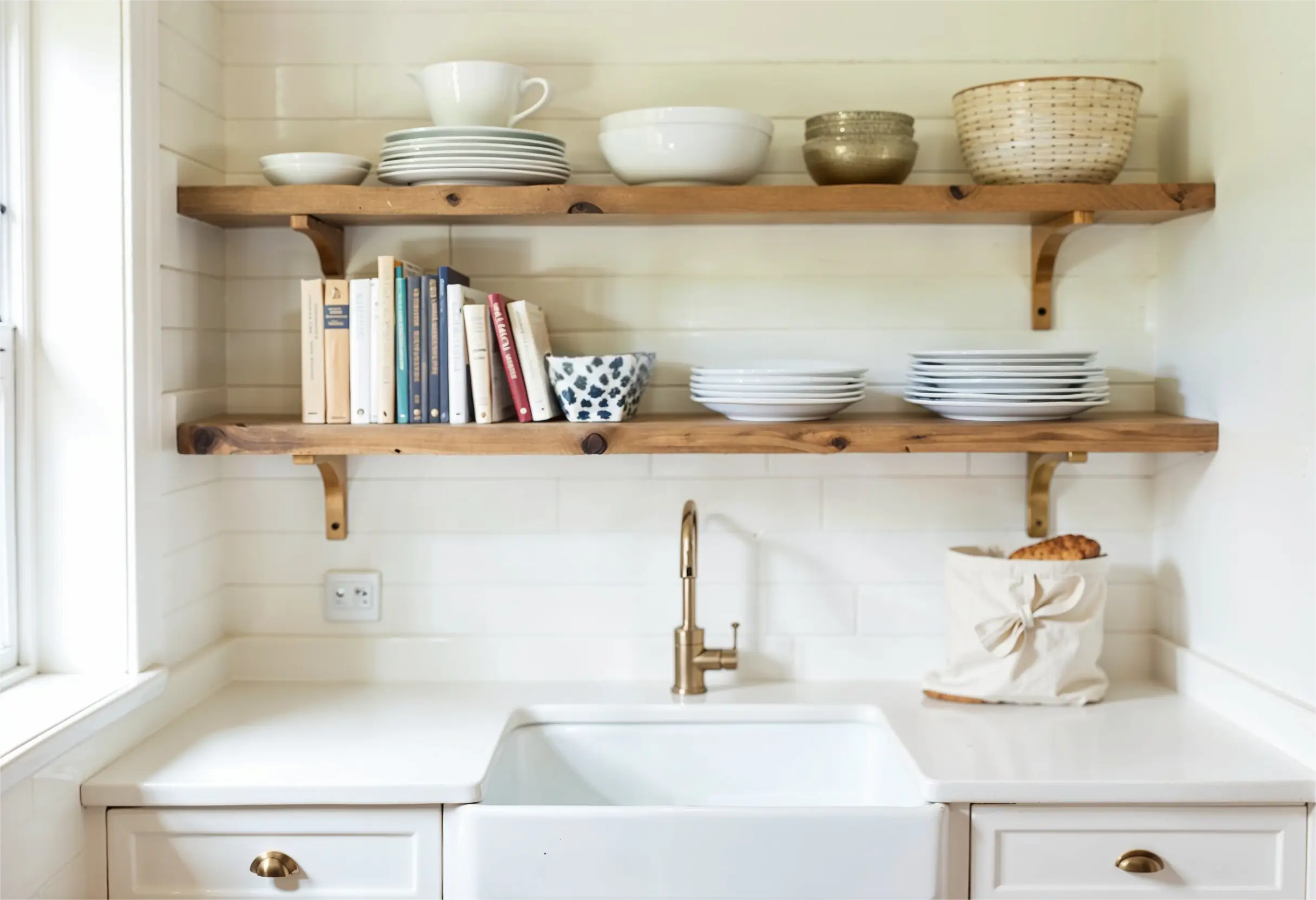
Still unsure whether open shelving in the kitchen is right for your home? KS Renovation Group specializes in helping homeowners navigate these important design decisions. Our team can evaluate your space, discuss your lifestyle needs, and recommend the perfect balance of open and closed storage for your kitchen. Contact us today for a free consultation and quote on your high-end kitchen remodel project.
When Open Shelving Works Best
First and foremost, deciding where open shelves kitchen designs make the most sense depends on your specific space and storage needs. Certain situations make open shelving particularly beneficial over traditional cabinetry.
In small or narrow kitchens
Open shelving works exceptionally well in compact kitchens where upper cabinets might feel overwhelming. By removing bulky cabinet doors, your kitchen instantly feels more spacious and airy. Metal shelves can even cross windows to provide storage without completely blocking natural light - something traditional cabinets simply cannot accomplish. This approach helps small kitchens feel less cramped while maximizing vertical storage opportunities and creating an open feel.
For showcasing curated collections
Open shelving transforms everyday items into thoughtful displays that tell a story about your lifestyle and preferences. White plates, colorful glassware, or vintage cookbooks become decorative items rather than hidden necessities. Even practical dish sets don't create visual clutter when displayed cohesively on open shelves - especially when sticking to a consistent color palette. This personalization opportunity simply isn't possible with closed cabinetry and adds visual interest to your kitchen decor.
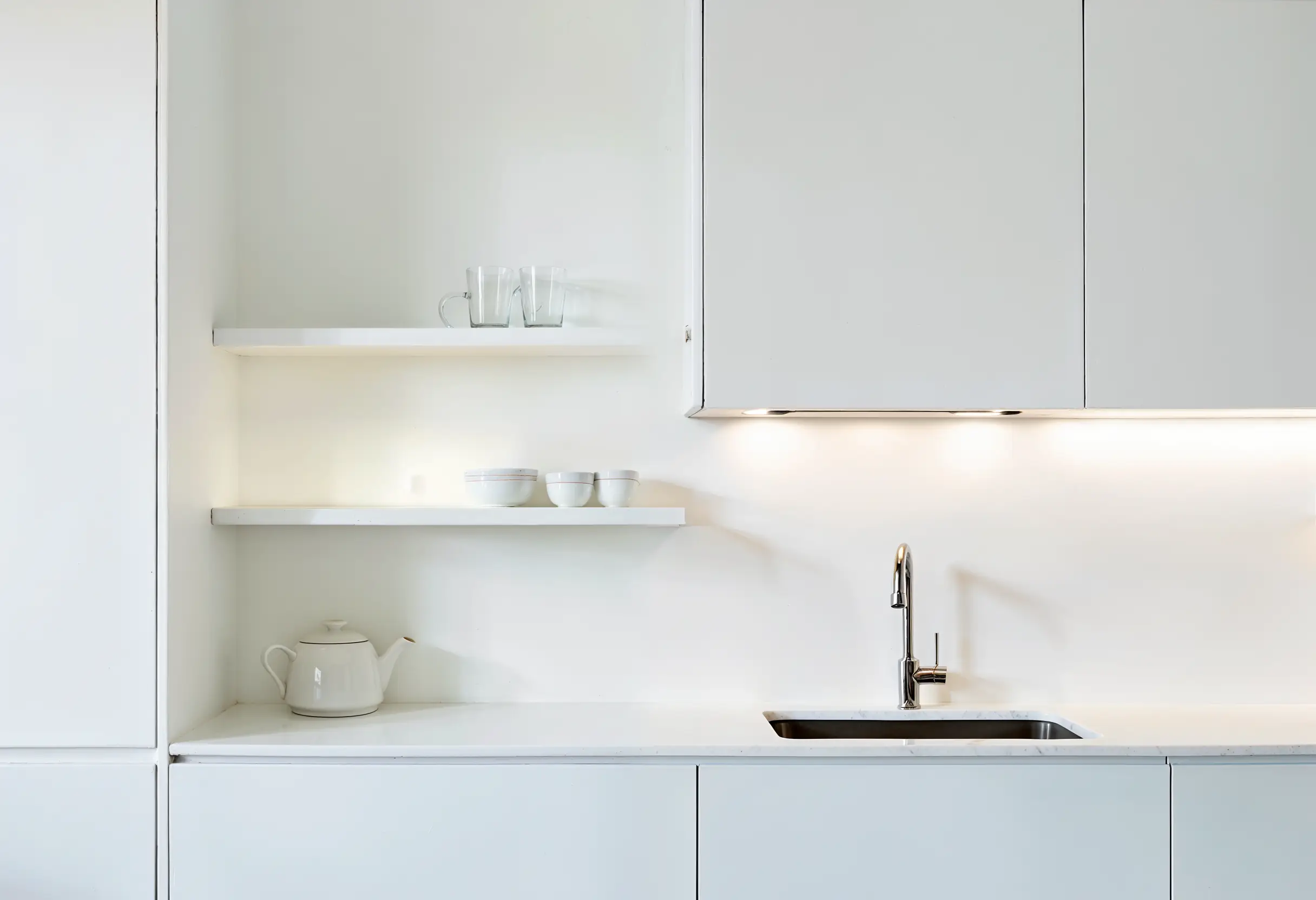
In homes with minimal clutter
If you maintain a relatively organized kitchen, open shelving encourages even better habits. Unlike cabinets that hide disorganization, open shelves promote intentional organization since everything remains visible. This visibility naturally encourages keeping only what you truly use and love, creating a more streamlined look and efficient kitchen experience overall.
Ready to explore how open shelving might transform your kitchen layout? KS Renovation Group specializes in creating custom storage solutions tailored to your specific space and style preferences. Contact KS Renovation Group for a free quote on your open shelving project and discover how we can help you maximize both functionality and aesthetics in your kitchen renovation.
When You Should Avoid Open Shelving
Despite their aesthetic appeal, open shelving kitchen designs aren't right for every home or homeowner. Understanding the practical challenges can help you avoid design regrets down the road.
If you dislike frequent cleaning
One of the biggest drawbacks of open shelving in the kitchen is maintenance. Unlike closed cabinets, open shelves require regular dusting - at minimum once monthly for a deep clean. Everything on display collects dust and kitchen residue, meaning you'll need to clean both the shelves and their contents frequently to maintain a neat appearance. Items used infrequently can quickly develop noticeable dust layers, requiring rinsing or washing before each use. Unfortunately, even regularly used items aren't immune to dust accumulation.
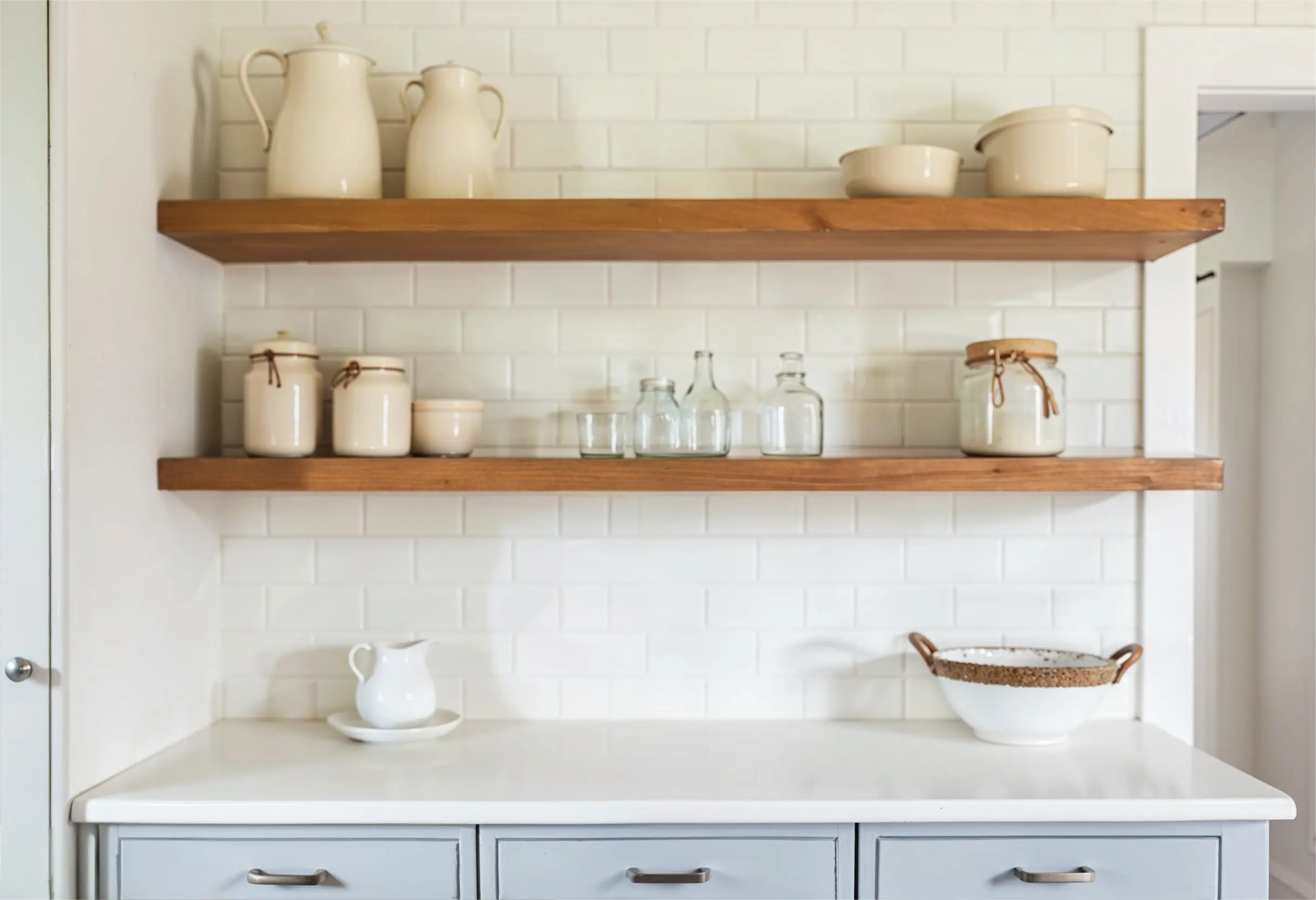
If you need to hide clutter
Open shelving demands constant organization. Without cabinet doors to conceal disarray, every misplaced item becomes part of your kitchen's visual landscape. This arrangement works poorly for those who prefer a relaxed approach to kitchen organization or have limited time for styling. Consequently, open shelves can appear chaotic during meal preparation when items are in active use. For those who value visual calm, traditional cabinets offer welcome concealment.
If you have mismatched or unattractive items
Open shelving can become visually unappealing if your dishes and kitchen items are outdated, chipped, or mismatched. The design premise relies on displaying attractive, cohesive items - otherwise, your shelves risk becoming an eyesore rather than a design feature. Practically speaking, not everyone owns Instagram-worthy dish collections or wants to purchase matching sets solely for display purposes.
If you cook often and deal with grease
Kitchens with heavy cooking activity present unique challenges for open shelving. Grease particles become airborne during cooking, eventually settling on exposed items. This is especially problematic for shelving near stovetops, where humidity and grease combine to create stubborn residue that clings to glassware and dishes. Even powerful range hoods cannot completely eliminate this issue, which can disrupt your kitchen workflow and require more frequent cleaning.
Torn between open and closed storage? Contact KS Renovation Group for a free consultation about hybrid storage solutions for your kitchen. Glass-front cabinets offer an elegant compromise - allowing display of attractive items while protecting them from dust and grease.
Design Tips for Stylish and Functional Open Shelves
Creating stylish yet functional open shelving goes beyond simply removing cabinet doors. The key lies in thoughtful arrangement and strategic placement that balances aesthetics with practicality.
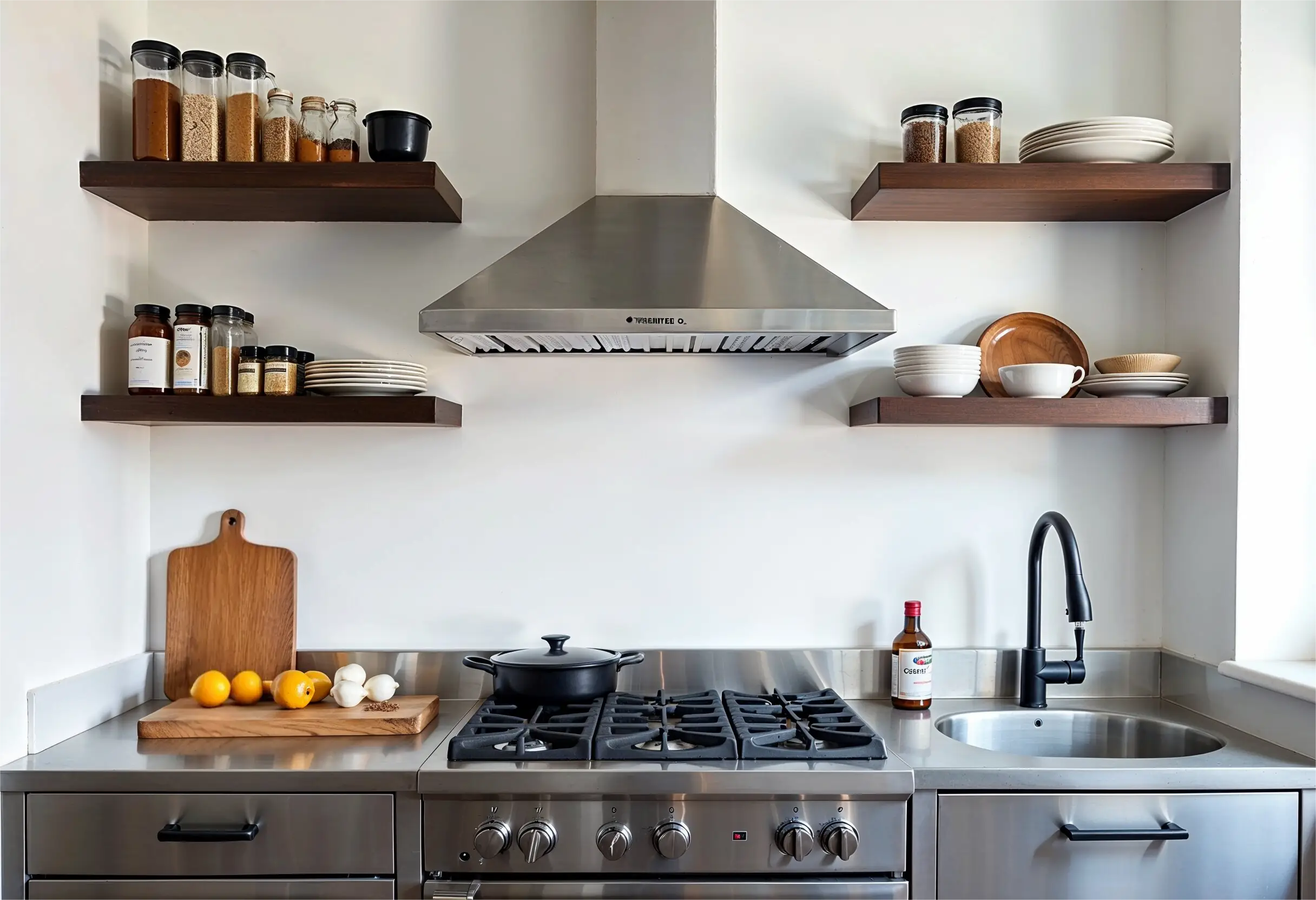
Stick to a color or material theme
Creating balance with color, texture, and theme makes open shelves look cohesive instead of chaotic. Consider matching similar items on a diagonal to create visual harmony. Assign each shelf a distinct color or stick to an overall scheme like blue, green, and teal for a coordinated look. For kitchens, using mostly white and glass for everyday essentials creates a clean foundation while allowing accent colors to shine, perfect for a farmhouse kitchen aesthetic or modern design.
Use larger items to reduce visual noise
Too many small objects create visual clutter. Incorporate larger statement pieces like serving bowls or pitchers to anchor your display. Store bulkier items in closed cabinets while reserving open shelves for lighter, visually appealing pieces. This thoughtful organization highlights the practicality of mixed storage solutions and maintains a streamlined look.
Leave negative space for balance
Less is absolutely more when styling open shelves. Resist the urge to fill every inch - instead, create breathing room between groupings. This negative space gives the eye places to rest, making your kitchen feel intentionally designed rather than overcrowded. As one designer notes, "Open shelving is meant to emulate an open and airy style."
Combine with closed storage for flexibility
A combination approach maximizes strengths while mitigating weaknesses. Use open shelves for quick-access items like everyday dishes or decorative items, while keeping closed cabinets for less attractive necessities. Distribute them evenly throughout your kitchen for a balanced look - perhaps pairing open shelves with closed cabinets below. This approach showcases how different storage types can work together seamlessly to meet your storage needs.
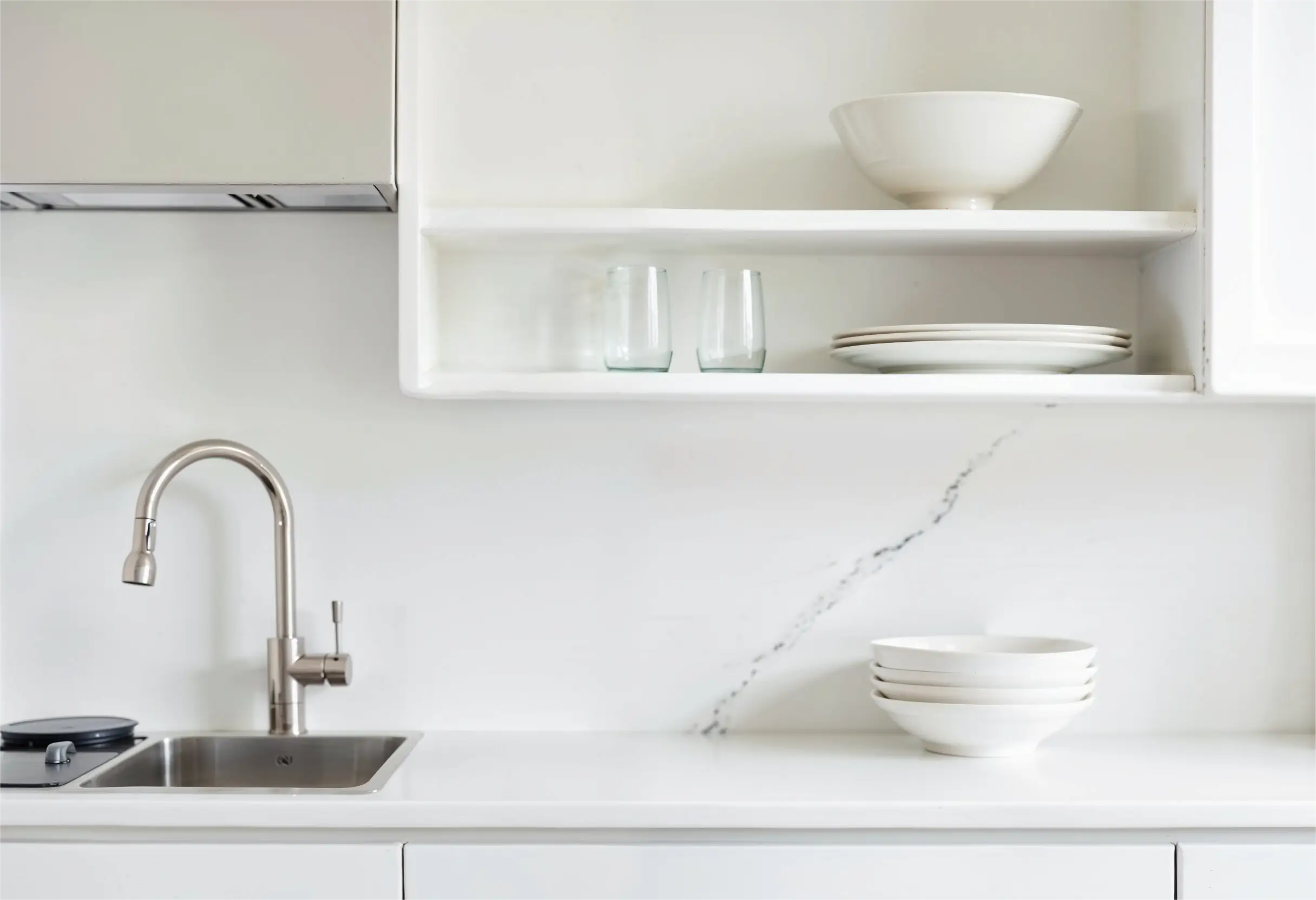
Try wood, black, or white open shelves for different styles
Material choice dramatically affects your kitchen's personality. Wooden shelves add warmth and rustic charm, perfectly complementing traditional or farmhouse kitchen spaces. Black shelving creates dramatic contrast and contemporary flair. White shelves disappear into light walls, making them ideal for minimalist aesthetics or small kitchens where visual lightness matters.
Feeling inspired but unsure where to start? Contact KS Renovation Group for a free consultation to explore modern open shelving ideas for your kitchen remodel. Our designers can help create the perfect balance of style and function for your unique space.
Conclusion
Open kitchen shelving offers undeniable advantages - visual openness, flexible storage, and a more affordable alternative to full cabinetry. It works especially well in small kitchens, minimalist designs, and homes that value curated displays. But open shelves also come with challenges: frequent cleaning, visible clutter, and the need for design consistency. That’s why many Manhattan homeowners opt for a hybrid approach - open shelving for everyday essentials and closed cabinets for everything else. The real key lies in intentional placement and a layout that fits your lifestyle, cooking habits, and design vision. Whether it’s rustic wood, sleek black metal, or minimalist white, the right shelving choice should feel effortless and elevated.
If you want a kitchen that reflects both beauty and function - without compromise - schedule your free consultation with KS Renovation Group. We’ll help you design and build a space that looks stunning and works perfectly, down to the last detail.
Key Takeaways
Open kitchen shelving is a divisive design choice that requires careful consideration of your lifestyle, cleaning habits, and aesthetic preferences before making the switch.
• Open shelving works best in small kitchens, for showcasing curated collections, and as a budget-friendly renovation option costing significantly less than cabinets.
• Avoid open shelves if you dislike frequent cleaning, need to hide clutter, have mismatched items, or cook often with grease and humidity.
• Create stylish displays by sticking to color themes, using larger statement pieces, leaving negative space, and combining with closed storage for balance.
• Consider a combination approach mixing open shelves for attractive everyday items with closed cabinets for practical storage and less appealing necessities.
• Material choice matters: wooden shelves add warmth, black creates drama, and white shelves provide minimalist appeal while making small spaces feel larger.
The key to successful open shelving lies in honest self-assessment of your organizational habits and willingness to maintain the constant curation these displays require.
FAQs
Q1. Are open kitchen shelves practical for everyday use? Open shelves can be practical for frequently used items, offering easy access and visibility. However, they require more frequent cleaning and organization compared to cabinets. They work best for those who cook often and don't mind regular maintenance to keep a tidy kitchen.
Q2. How do open shelves impact the look of a kitchen? Open shelves can make a kitchen feel more spacious and airy, especially in small or narrow spaces. They offer opportunities for personalization and styling, allowing you to showcase attractive dishes or decor. However, they also demand constant organization to avoid a cluttered appearance and maintain visual interest.
Q3. What are the maintenance requirements for open kitchen shelving? Open shelves require more frequent cleaning than cabinets, as items are exposed to dust and cooking residue. You'll need to clean both the shelves and displayed items regularly, typically at least once a month for a deep clean. This is especially important for shelves near cooking areas to maintain a neat appearance.
Q4. How does the cost of open shelving compare to traditional cabinets? Open shelving is generally more budget-friendly than traditional cabinets. Simple floating shelves can cost between $20-100 per shelf plus installation, while quality cabinets often run into hundreds or thousands of dollars per unit. This makes open shelving an attractive option for budget-conscious kitchen remodel projects.
Q5. What design tips can make open shelving more stylish and functional? To create stylish and functional open shelving, stick to a cohesive color or material theme, use larger items to reduce visual clutter, leave some negative space for balance, and consider combining open shelves with closed storage. Choose materials like wood, black, or white shelves to complement different kitchen styles and enhance your overall design aesthetic.

KS Renovation Blog
Get Inspired
Meaningful information about home remodeling for the true NYC homeowners.
OUr Clients Say
NYC kitchen remodeling Projects and more



